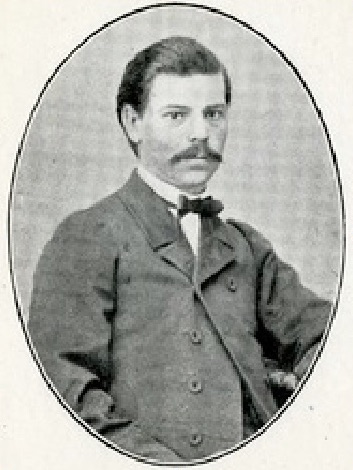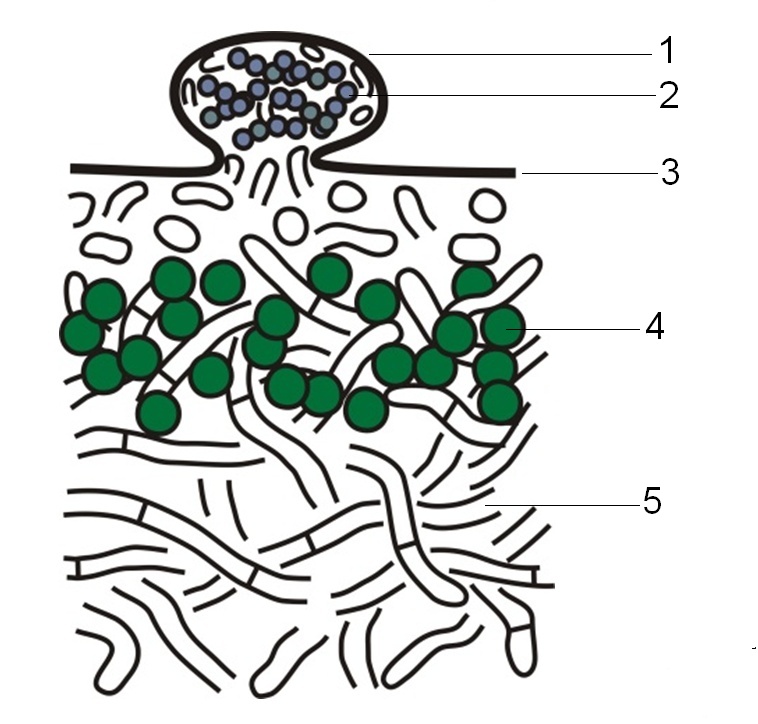|
Pseudocyphellaria
''Pseudocyphellaria'' is a genus of large, leafy lichens that are sometimes referred to as "specklebelly" lichens.Brodo, I. M., S. D. Sharnoff, and S. Sharnoff. 2001. ''Lichens of North America''. Yale University Press: New Haven. The genus has a widespread distribution, especially in south temperate regions, and contains about 170 species. They resemble '' Lobaria'', except that most species of ''Pseudocyphellaria'' have conspicuous pseudocyphellae on their lower surface, a characteristic that was once considered unique to this genus. Some species contain pulvinic acid-related pigments; in these species the soredia and pseudocyphellae can be bright yellow. Taxonomy ''Pseudocyphellaria'' was originally circumscribed in 1890 by Finnish lichenologist Edvard August Vainio, with ''P. aurata'' as the type species. In the 2010s, molecular phylogenetic analyses showed that this species, along with a few others, nested within a small clade separate from most ''Pseudocyphellaria'' ... [...More Info...] [...Related Items...] OR: [Wikipedia] [Google] [Baidu] |
Crocodia
''Crocodia'' is a genus of foliose lichens in the family Peltigeraceae. It has eight species. The genus has a cosmopolitan distribution, although most species occur in temperate and tropical regions of the Southern Hemisphere. The main characteristics of the genus that separate it from its parent genus, ''Pseudocyphellaria'', include a yellow medulla and yellow pseudocyphellae (tiny pores for gas exchange) on the lower thallus surface. Taxonomy ''Crocodia'' was originally proposed by German naturalist Johann Heinrich Friedrich Link in 1833, with ''Crocodia aurata'' assigned as the type species. A 2013 molecular phylogenetics-based analysis of the Lobariaceae showed that the large genus ''Pseudocyphellaria'' was polyphyletic. In 2011, Jørgensen and Galloway had proposed to split ''Pseudocyphellaria'' into two genera, with the large clade containing the type species '' P. crocata'' to retain the original genus name. The genus name ''Crocodia'' was reinstated by Moncada and c ... [...More Info...] [...Related Items...] OR: [Wikipedia] [Google] [Baidu] |
Pseudocyphellaria Crocata
''Pseudocyphellaria crocata'' is a species of lichen in the family Peltigeraceae, belonging to the ascomycetes. Its predators include the land snail '' Notodiscus hookeri''.Gadea, A., Le Pogam, P., Biver, G., Boustie, J., Le Lamer, A. C., Le Dévéhat, F., & Charrier, M. (2017). "Which Specialized Metabolites Does the Native Subantarctic Gastropod ''Notodiscus hookeri'' Extract from the Consumption of the Lichens ''Usnea taylorii'' and ''Pseudocyphellaria crocata''?". ''Molecules'' 22(3): 425. In Iceland, it has been recorded in only two locations and is classified as critically endangered An IUCN Red List critically endangered (CR or sometimes CE) species is one that has been categorized by the International Union for Conservation of Nature as facing an extremely high risk of extinction in the wild. As of December 2023, of t ... (CR).Náttúrufræðistofnun Íslands celandic Institute of Natural History(1996). Válisti 1: Plöntur.' (in Icelandic) Reykjavík: Náttú ... [...More Info...] [...Related Items...] OR: [Wikipedia] [Google] [Baidu] |
Pseudocyphellaria Allanii
''Pseudocyphellaria allanii'' is a species of corticolous (bark-dwelling) and foliose (leafy) lichen in the family Peltigeraceae. Found in New Zealand, it was formally described as a new species in 1982 by Bernd Renner and David Galloway. The type specimen was collected by Galloway on the path to Emily Falls on Mount Peel (South Canterbury); here it was found growing on a fallen ''Pseudowintera'' on a stream bank. The lichen contains the secondary compounds 7β-acetoxyhopan-22-ol and hopan-15α-22-diol, which are derivatives of the triterpene compound hopane. The specific epithet ''allanii'' honours New Zealand botanist Harry Allan Harry Howard Barton Allan (27 April 1882 – 29 October 1957) was a New Zealand teacher, botanist, scientific administrator, and writer. Despite never receiving a formal education in botany, he became an eminent scientist, publishing ove ..., who "described the vegetation of Mt Peel, and who later promoted interest in New Zealand liche ... [...More Info...] [...Related Items...] OR: [Wikipedia] [Google] [Baidu] |
Pseudocyphella
Pseudocyphellae (singular ''pseudocyphella'') are structures in lichens that appear as tiny pores on the outer surface (the cortex) of the lichen. They are caused when there is a break in the cortex of the lichen, and the medullary hyphae extend to the surface. Pseudocyphellae are the same colour as the medulla of the lichen, which is generally white, but can be yellow in some species of '' Pseudocyphellaria'' and in ''Bryoria fremontii''. The presence/absence, abundance, colour, and shape of pseudocyphellae can all be diagnostic features used to identify different species. They facilitate gas exchange through the surface of the lichen, and may provide an adaptive advantage in temperate In geography, the temperate climates of Earth occur in the middle latitudes (approximately 23.5° to 66.5° N/S of the Equator), which span between the tropics and the polar regions of Earth. These zones generally have wider temperature ran ... environments. References *Brodo, I. M., S ... [...More Info...] [...Related Items...] OR: [Wikipedia] [Google] [Baidu] |
Edvard August Vainio
Edvard August Vainio (born Edvard Lang; 5 August 185314 May 1929) was a Finnish lichenology, lichenologist. His early works on the lichens of Lapland (Finland), Lapland, his three-volume monograph on the lichen genus ''Cladonia'', and, in particular, his study of the taxonomy (biology), classification and morphology (biology), form and structure of lichens in Brazil, made Vainio renowned internationally in the field of lichenology. Young Vainio's friendship with university student Johan Petter Norrlin, who was nearly eleven years older, helped him develop an impressive knowledge of the local cryptogams (ferns, mosses, algae, and fungi, including lichens) and afforded him ample opportunity to hone his collection and identification (biology), identification techniques at an early age. It was through this association that Vainio met Norrlin's teacher, the prominent lichenologist William Nylander (botanist), William Nylander, who supported his early botanical efforts. Vainio's earl ... [...More Info...] [...Related Items...] OR: [Wikipedia] [Google] [Baidu] |
Committee On The Status Of Endangered Wildlife In Canada
The Committee on the Status of Endangered Wildlife in Canada (COSEWIC, French: Comité sur la situation des espèces en péril au Canada, COSEPAC) is an independent committee of wildlife experts and scientists whose "raison d'être is to identify species at risk" in Canada. It designates the conservation status of wild species. It was established in 1977 to provide a single, scientifically sound classification of wildlife species at risk of extinction. In the 2002 Species at Risk Act, COSEWIC was appointed as the body to identify and assess a species status. Although the status assigned by COSEWIC is not legally binding, it does report its results to the government and the public. The report is influential toward the addition of species to the List of Wildlife Species at Risk by the Minister of the Environment. Risk categories By December 2013 there were "686 wildlife species in various COSEWIC risk categories, including 196 Special Concern (SC), 166 Threatened (T), 302 Endan ... [...More Info...] [...Related Items...] OR: [Wikipedia] [Google] [Baidu] |
Old-growth Forest
An old-growth forest or primary forest is a forest that has developed over a long period of time without disturbance. Due to this, old-growth forests exhibit unique ecological features. The Food and Agriculture Organization of the United Nations defines primary forests as naturally regenerated forests of native tree species where there are no clearly visible indications of human activity and the ecological processes are not significantly disturbed. One-third (34 percent) of the world's forests are primary forests. Old-growth features include diverse tree-related structures that provide diverse wildlife habitats that increases the biodiversity of the forested ecosystem. Virgin or first-growth forests are old-growth forests that have never been logged. The concept of diverse tree structure includes multi-layered canopies and canopy gaps, greatly varying tree heights and diameters, and diverse tree species and classes and sizes of woody debris., the world has of primary forest ... [...More Info...] [...Related Items...] OR: [Wikipedia] [Google] [Baidu] |
Cephalodia
A cephalodium () is a small gall-like structure found in some lichens. They occur only in lichens which contain both cyanobacterial and green algal partners. Cephalodia can occur within the tissues of the lichen, or on its upper or lower surface. Lichens with cephalodia can fix nitrogen, and may be an important contributor of nitrogen to the ecosystem. Context Lichens are complex organisms composed of a fungal partner and a photosynthetic partner. While the photosynthetic partner is most often a species of green alga, in about 10 percent of all lichens, a species of cyanobacterium is involved instead. In an even smaller number of cases – estimated at between 2 and 4 percent of all lichens – species of both a green alga and a cyanobacterium serve as photosynthetic partners. There are roughly 520 species of these "tripartite" lichens, which fall into at least 21 different genera. In most of these lichens, the green algae live within the lichen's medulla while the cyanobacteri ... [...More Info...] [...Related Items...] OR: [Wikipedia] [Google] [Baidu] |
Dictyochloropsis
''Dictyochloropsis'' is a genus of Unicellular organism, unicellular Green algae, green alga of the phylum Chlorophyta. This genus consists of Free-swimming, free-living algae which have a reticulate (net-like) chloroplast that varies slightly in Morphology (biology), morphology between species, and that when mature always lacks a pyrenoid. ''Dictyochloropsis'' is Asexual reproduction, asexual and reproduces using autospores. Previously, many species of the morphologically similar genus ''Symbiochloris'' were incorrectly classified to this taxon. These species were recently reclassified on the basis of Molecular phylogenetics, molecular DNA analyses. ''Dictyochloropsis'' is found in Ecoregion#Terrestrial, terrestrial environments all over the world, but can live and grow in Fresh water, freshwater environments as well. Recently, there has been promising research towards growing ''Dictyocloropsis'' in culture for the production of biofuels. Etymology The name of ''Dictyochlorops ... [...More Info...] [...Related Items...] OR: [Wikipedia] [Google] [Baidu] |
Scandinavia
Scandinavia is a subregion#Europe, subregion of northern Europe, with strong historical, cultural, and linguistic ties between its constituent peoples. ''Scandinavia'' most commonly refers to Denmark, Norway, and Sweden. It can sometimes also refer to the Scandinavian Peninsula (which excludes Denmark but includes a part of northern Finland). In English usage, Scandinavia is sometimes used as a synonym for Nordic countries. Iceland and the Faroe Islands are sometimes included in Scandinavia for their Ethnolinguistics, ethnolinguistic relations with Sweden, Norway and Denmark. While Finland differs from other Nordic countries in this respect, some authors call it Scandinavian due to its economic and cultural similarities. The geography of the region is varied, from the Norwegian fjords in the west and Scandinavian mountains covering parts of Norway and Sweden, to the low and flat areas of Denmark in the south, as well as archipelagos and lakes in the east. Most of the population ... [...More Info...] [...Related Items...] OR: [Wikipedia] [Google] [Baidu] |
Nitrogen Fixation
Nitrogen fixation is a chemical process by which molecular dinitrogen () is converted into ammonia (). It occurs both biologically and abiological nitrogen fixation, abiologically in chemical industry, chemical industries. Biological nitrogen fixation or ''diazotrophy'' is catalyzed by enzymes called nitrogenases. These enzyme complexes are encoded by the Nif gene, ''Nif'' genes (or ''Nif'' homologs) and contain iron, often with a second metal (usually molybdenum, but sometimes vanadium). Some nitrogen-fixing bacteria have symbiotic relationships with plants, especially legumes, mosses and aquatic ferns such as ''Azolla''. Looser non-symbiotic relationships between diazotrophs and plants are often referred to as associative, as seen in nitrogen fixation on rice roots. Nitrogen fixation occurs between some termites and fungus, fungi. It occurs naturally in the air by means of NOx, NOx production by lightning. Fixed nitrogen is essential to life on Earth. Organic compounds such ... [...More Info...] [...Related Items...] OR: [Wikipedia] [Google] [Baidu] |
Photobiont
A lichen ( , ) is a hybrid colony of algae or cyanobacteria living symbiotically among filaments of multiple fungus species, along with yeasts and bacteria embedded in the cortex or "skin", in a mutualistic relationship.Introduction to Lichens – An Alliance between Kingdoms . University of California Museum of Paleontology. . Lichens are the lifeform that first brought the term symbiosis (as ''Symbiotismus'') into biological context. Lichens have since been recognized as important actors in and producers which many higher trophic feeders feed on, such as reindeer, gastropods, nematodes, mites, and springtails. Lich ... [...More Info...] [...Related Items...] OR: [Wikipedia] [Google] [Baidu] |




